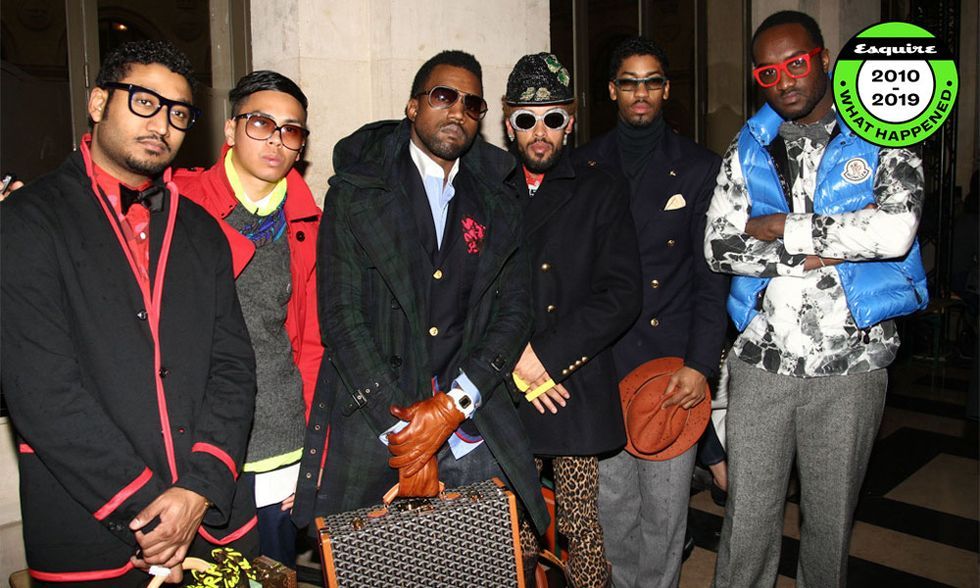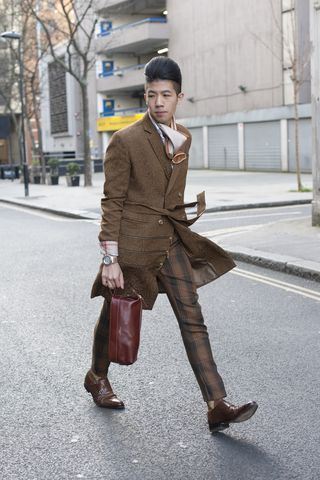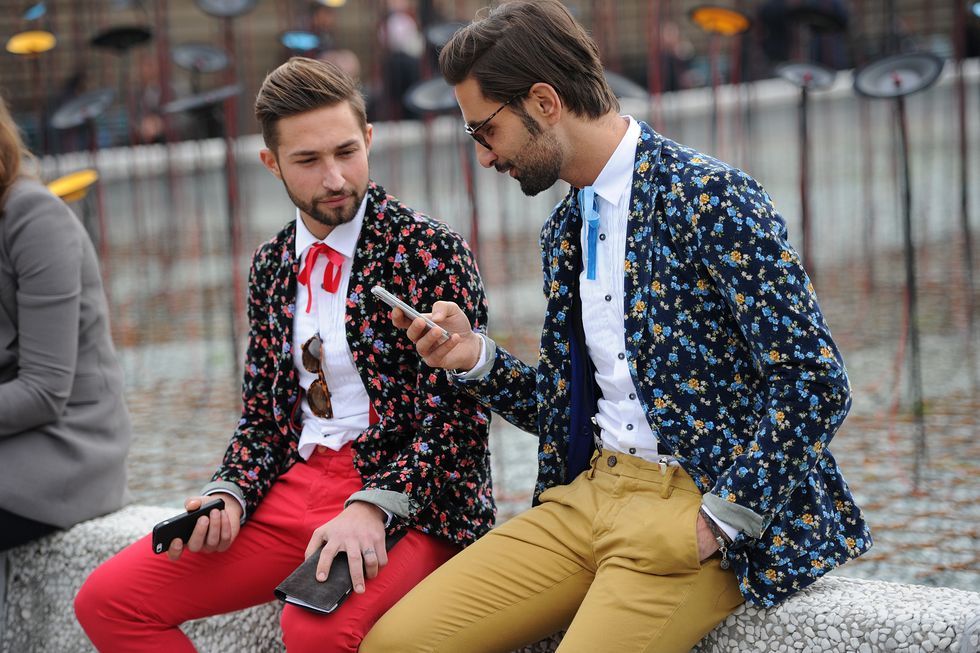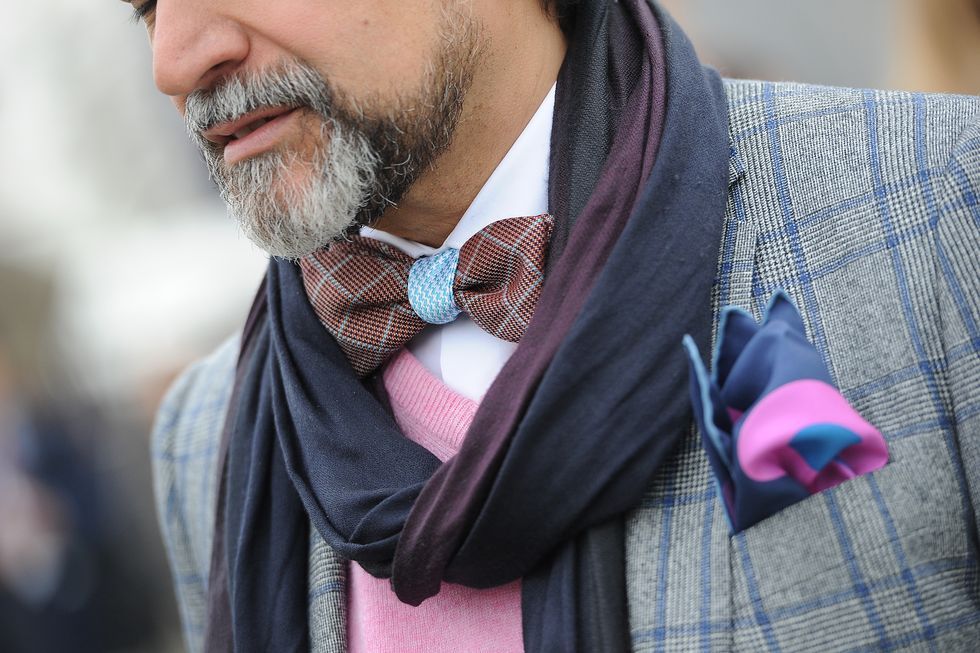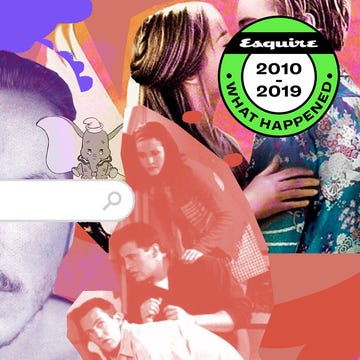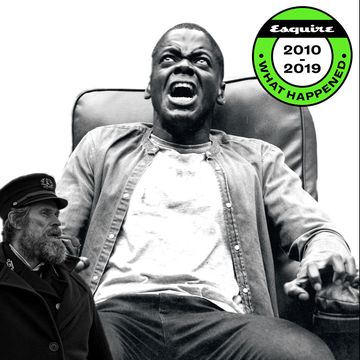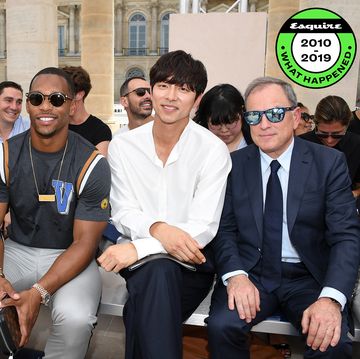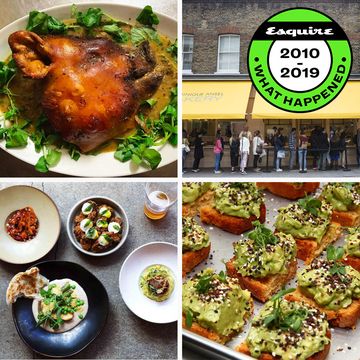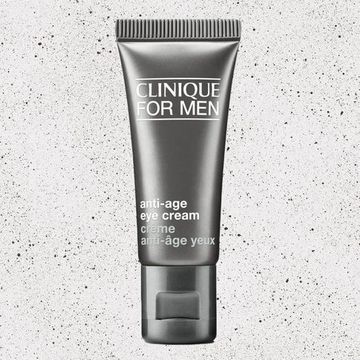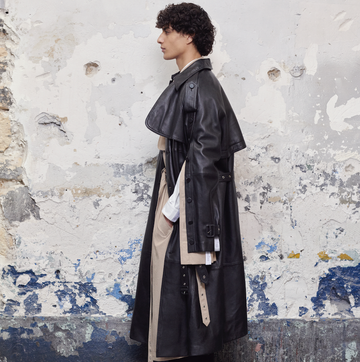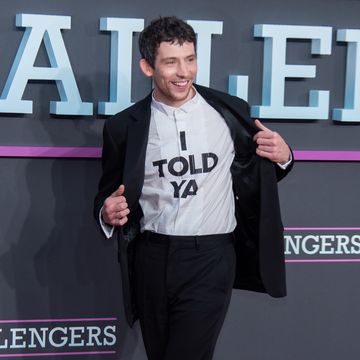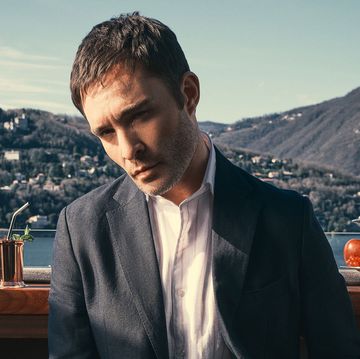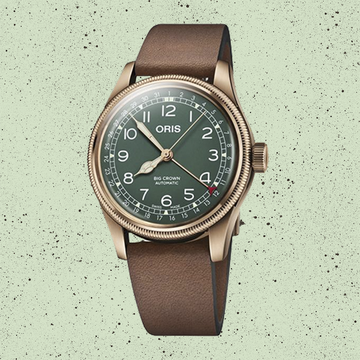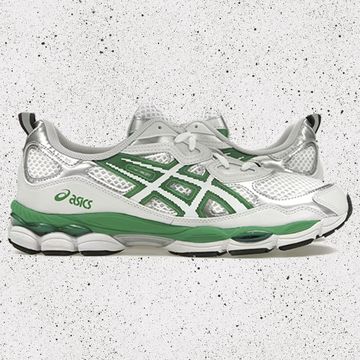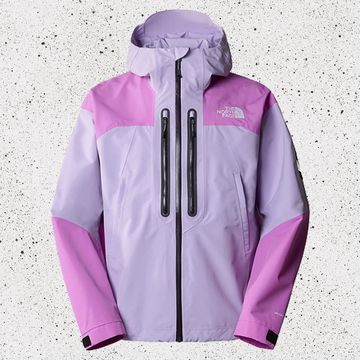Good news! Blue is the new black. Well actually, blue is the new Living Coral, which in turn was the new Ultra Violet. That shade of dusty purple took the mantle from Greenery and before that we had Serenity, Rose Quartz and Marsala.
Pantone, the New Jersey-based overlord of colour, has decreed that Classic Blue is the colour of 2020. Not quite navy, but way deeper than baby blue, the shade is more North Atlantic Sea than Indian Ocean, which feels a bit dull, doesn’t it? Architectural Digest has stated that the choice is “a foil to the uncertainty the future holds”. But sod climate change and Brexit and the grinding misery of simply being alive on Earth right now, because sober, blue clothing is cool. Blazers! T-shirts! Chinos! BLUE! BLUE! BLUE!
But maybe ‘Classic Blue’ everything is what men will want in 2020. That is to say, our collective taste seems to have flattened of recent, at least compared to the halcyon days of the early 2010s. You remember #menswear, right? The social media tag that inspired a movement, which withered into a term of gentle ridicule, then settled as the gateway to an infinite scroll of repetitive, distressed, weirdly tight men’s clothing.
My first round of fashion shows as a member of the Esquire team was January 2015; the Autumn/Winter 2015 collections. I remember a palpable buzz during the first weekend here in London, the manifestation of a feeling that menswear was on the march. Women’s clothes dominated the wider fashion industry, but people spoke (almost bragged) about how the men’s side of the industry was growing at a faster rate. London Collections: Men (now called London Fashion Week Men’s) was home to rich mix of billboard shows and presentations – Burberry, Alexander McQueen, Tom Ford, Paul Smith, Tiger of Sweden – so international buyers and press poured in, as well as the burgeoning pack of bloggers, influencers and street style photographers. That was on the rise, too; the street style thing.
If you search for those pictures, you’ll see men in suits and pea coats and military boots and some, quite a lot, will have an oiled moustache or even a jaunty hat. No Balenciaga trainers, no Dior harnesses, no Linea Rossa bucket hats. These were the end days of peacockery, the last vapours of a compact epoch of noughties dandyism; a time when the basic requirement of being stylish meant wearing a waistcoat or tassel loafers or a pocket square. Simply wearing a suit that fit you properly (and maybe had a weird check) was enough. The empowerment had begun years before, in part, from #menswear, or the various forums and internet channels which disseminated information for style-conscious dudes around the world.
“It really started with message boards and forums, such as askandyaboutclothes.com, styleforum.com and the message boards at my alma mater, men.style.com ,which – along with the street style boom started by the Sartorialist and then Tommy Ton – began showing men who care about clothes as a matter of course,” says Josh Peskowitz, the former fashion editor and men’s fashion director at Bloomingdales, who is currently VP of fashion direction at Moda Operandi (basically, a certified Yoda of 21st century fashion).
Beyond men finding like-minded souls on the internet, and being fed an ever-increasing volume of pictures of real dudes wearing clothes, there was a cultural factor, too. One in particular: Mad Men. “The Sixties style of suit and tie dressing seemed so cool for the first time in years," says Peskowitz. "It showed men wearing suits that stood out, rather than blended in.” Men wore suits to work, but rather than a uniform, it was suddenly a canvas on which to express one’s self.
Fast forward to the end of 2019 and that little patch of discovery feels like a lifetime ago. The trend for slick tailoring dissipated, despite an apparent reprise in Autumn/Winter ’19 shows, and ‘street wear’ has reigned supreme (or Supreme) for years. So what happened? Well it could be argued that so-called ‘real’ men were scared off by hoodies and trainers and shiny fabrics and slouchy silhouettes. They knew where they were with a suit, but navigating the perpetual motion of drop culture and collaborations takes real mental and monetary investment. You can’t just find a throw in a pocket square or pick out some natty socks, drink negronis or get a Don Draper haircut. You need to be on, and being on is damn hard.
On one side you have those who know which Palace stuff to buy, know how to mix Gucci loafers with Issey Miyake tailoring and high-end technical sportswear. These are men who embrace the opportunity for eclecticism. And conversely, you have the men that have found a safe haven in selvedge denim, grey sweatshirts, cotton overshirts and white tennis shoes.
At Dior and Louis Vuitton, Kim Jones and Virgil Abloh have moved the aesthetic of their brands on leaps and bounds, blurring sportswear, classically luxurious fabrics and even gender norms in their seasonal collections. But both brands have recently introduced their versions of ‘essential’ collections, too. The ranges feature simple overcoats, sweats, monotone tailoring and leather accessories. Cos, one of the more premium, directional ‘high street’ retailers has a big focus on its Essentials collection, while the likes of Everlane and Asket build men’s collections around the concept of uniforms. Blue blazers, white tees, crew neck knits etc.
I would say that there’s never been a better time for men and their clothes. Not only have the traditional ‘rules’ been all but demolished, but quality, ethical production and provenance are held in ever-higher esteem, so it’s easier to buy ‘better’. But the access to everything is mind-boggling. It’s not just easy to mix niche with mass, it’s positively encouraged. Still, though the industry continues to grow, the collective excitement around menswear as a platform for straightforward blokes to try stuff out and express themselves has waned.
If you search #menswear on Instagram now, the results are uninspiring. Lots of cheesy dudes in jeans with ripped knees or suits stretched so tight across their muscly chests they barely button up. They all stand with one foot slightly ahead of them – like they’re moving forward in life (and you could too) – or holding their hands together in muted prayer, or tugging their collar, or tweaking their shirt cuff. So many bare ankles and terrifyingly sculpted beards. Where is the subtlety? Where is the weirdness?
Perhaps we just expected too much too soon. These are still early days and the industry is yet burgeoning. “For so many men, they are still in the beginning phase of their fashion journey,” says Peskowitz. “What could be more exciting to brands than that?”
